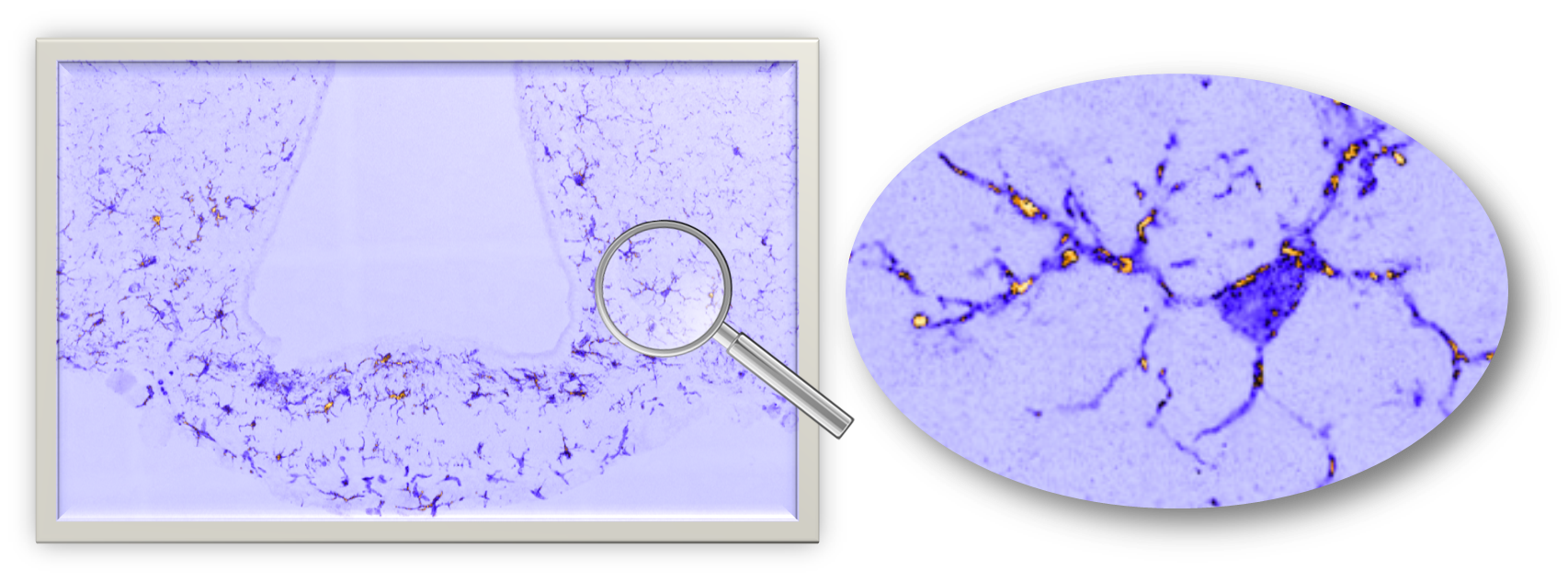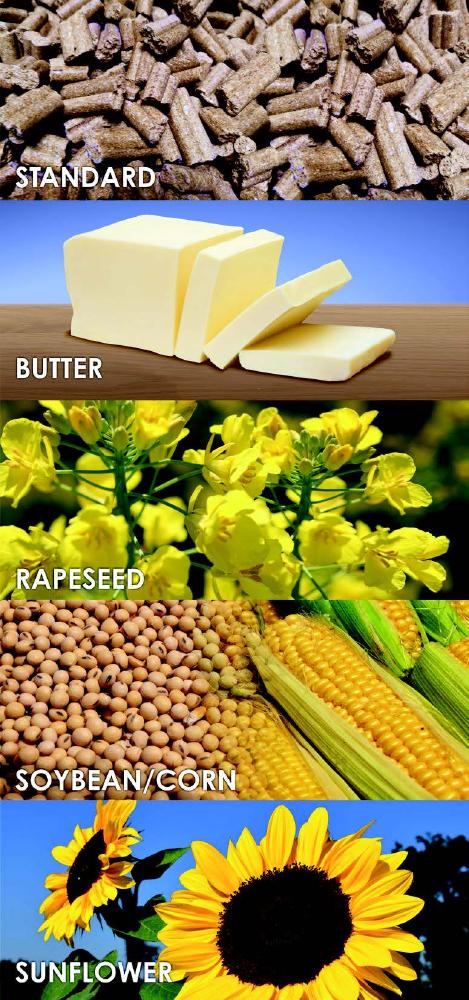Academy of Excellence "Space, Environment, Risk and Resilience"
Nutritional Lipids, Neuroinflammation and Obesity: The Deleterious Role of Industrial Fatty Acids

Academy 3 highlight
Diseases and complications related to nutritional problems are a major current health issue in France and around the world. By addressing this critical issue, the NutriNeuro project addresses one of the major concerns of Academy 3, i.e., the impacts and risks of anthropogenic actions on human health.
The project
The consumption of "Western" diets with high sugar and fat content combined with a decrease in the consumption of vegetables, fiber, cereals and bread and a generally low level of physical activity, has led to an increased prevalence of obesity in Western countries (Europe, USA, etc.). These Western obesogenic diets are dangerous to health because they have excessive amounts of saturated and polyunsaturated fatty acids (PUFAs), such as the deleterious pro-inflammatory omega-6 type (Ω-6). The Ω-6 fatty acid can indeed dramatically alter the integrity of the coronary artery walls, while the lack of omega-3 (Ω-3), an anti-inflammatory fatty acid, can increase the deleterious action of Ω-6. The past 40 years have been marked by a drastic increase in the Ω-6/Ω-3 ratios in the diet of the French and Western populations which now stands at around 8; an ideal ratio would be less than 5. The failure to respect a certain Ω-6/Ω-3 balance could predispose people to inflammatory developments which generally initiate a variety of diseases including obesity and associated problems (cardiovascular disease, stroke, etc.).
The purpose of this project is to characterize the impact of different lipid categories on obesity development and the associated occurrence of inflammation. For 4, 8 and 16 weeks, we fed mice with different hyperlipidic diets (enriched in butter, rapeseed, soybean/corn, or sunflower) containing a range of Ω-6/Ω-3 ratios (2.3-17.5), and compared this to a standard diet. From the analyses of inflammatory profiles, we could show that it was not only the amount but also the nature of the lipids contained in the hyperlipidic diets that affected the inflammatory molecule production in both peripheral circulation and the hypothalamus (brain region involved in feeding behavior regulation). Using an innovative pharmacogenetics approach (DREADD technology) made to specifically inhibit the two major brain cells involved in feeding behavior (glial cells, and more specifically astrocytes and microglia), we also revealed the implication of the hypothalamic activation of those cells in the development of obesity. However, this brain cell activation seems to be reversible, which suggests that resilient strategies will be possible.

The +
In addition to its innovative technological approach, this project is novel because it addresses the impact of fasting on brain cells, a scientific question that has rarely been studied before. If successful, it may contribute to a better understanding of the detrimental impact of Western high-fat diets in human populations.
What’s next?
Should our project be successful, it will pave the way for the identification of molecular and cellular pathways that could be targeted by pharmaceutical drugs to prevent the detrimental impact of Western high-fat diets on human health. We therefore plan to initiate a partnership with industrial partners working in this field.
Project information
|
Scientific domain
Life Sciences
Theme Nutrition
|
Key words
Nutritional lipids
Obesity
Neuroinflammation
Hypothalamus
Glial cells
|
|
Total budget
80,5 k€ including :
25 150 € from Académie 3 ; 10 150 € from LABEX SignaLife Académie 4 ; 5 500 € from Académie 2 ; 39 700 € from Fondation pour la Recherche Médicale. |
Students inolved
STOBBE Katharina International collaborations
RICHARD Denis
|
| Partner laboratories
I3S, Morphème Team, Sophia Antipolis
CSGA, Dijon
ICAN, Paris
|
Project members
ROVERE Carole,
STOBBE Katharina,
NAHON Jean-Louis,
DEVAUX Nadège,
BLONDEAU Nicolas,
DEBREUVE Eric,
BENANI Alexandre,
CLEMENT Karine.
|

Carole Rovere
Project valorization
- 2017 Le Thuc O., Stobbe K., Cansell C., Nahon J.L., Blondeau N., Rovère C. Hypothalamic Inflammation and Energy Balance Disruptions: Spotlight on Chemokines. Front. Endocrinol., 2017 doi.org/10.3389/fendo.2017.00197. IF 2017 : 3,675
- 2019 Cansell C., Stobbe K., Le Thuc O., Mosser C.A., Ben-Fradj S., Leredde J., Lebeaupin C., Debayle D., Fleuriot L., Brau F., Devaux N., Benani A., Audinat E., Blondeau N., Nahon J.L., Rovère C. Food exacerbates post-prandial hypothalamic inflammation involving GFAP+ cells and microglia. 2019, https://biorxiv.org/cgi/content/short/835967v1.
- 2020 Nuzzaci D.#, Cansell C.#, Liénard F., Nédélec E., Ben Fradj S., Castel J., Foppen E., Denis R., Grouselle D., Laderrière A., Lemoine A., Mathou A., Tolle V., Heurtaux T., Fioramonti X., Audinat E., Pénicaud L., Nahon J.L., Rovère C., Benani A. Postprandial hyperglycemia stimulates neuroglial plasticity in hypothalamic POMC neurons after a balanced meal. Cell Rep., 30(9):3067-3078. doi: 10.1016/j.celrep.2020.02.029. IF 2018/2019: 7,82
- 2020 Cansell C., Stobbe K., Sanchez C., Le Thuc O., Mosser C.A., Ben-Fradj S., Leredde J., Lebeaupin C., Debayle D., Fleuriot L., Brau F., Devaux N., Benani A., Audinat E., Blondeau N., Nahon J.L., Rovère C. Dietary fat exacerbates post-prandial hypothalamic inflammation involving GFAP-positive cells and microglia in male mice. Glia, 2020, doi: 10.1002/glia.23882. IF 2018/2019: 5,83

















